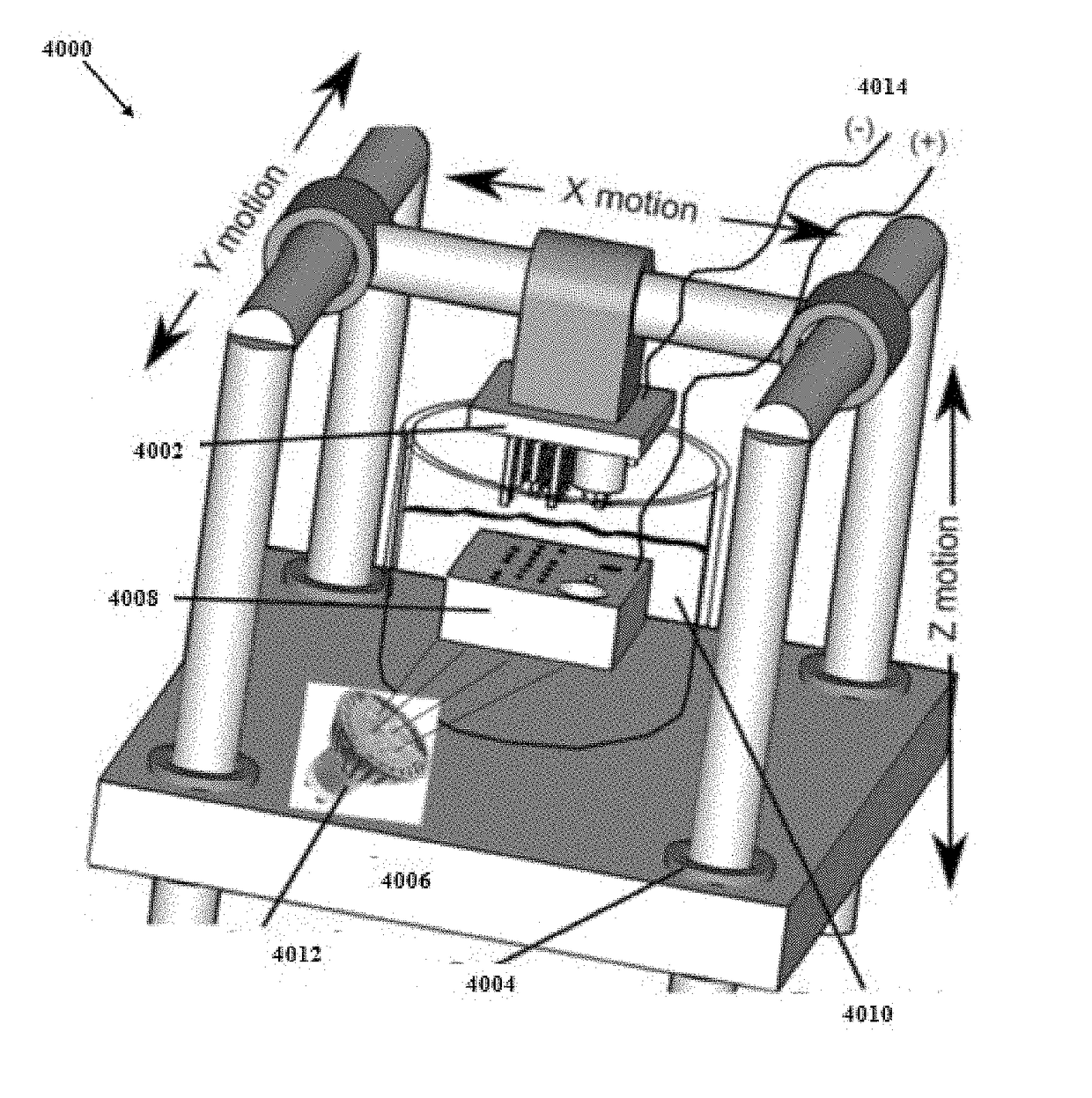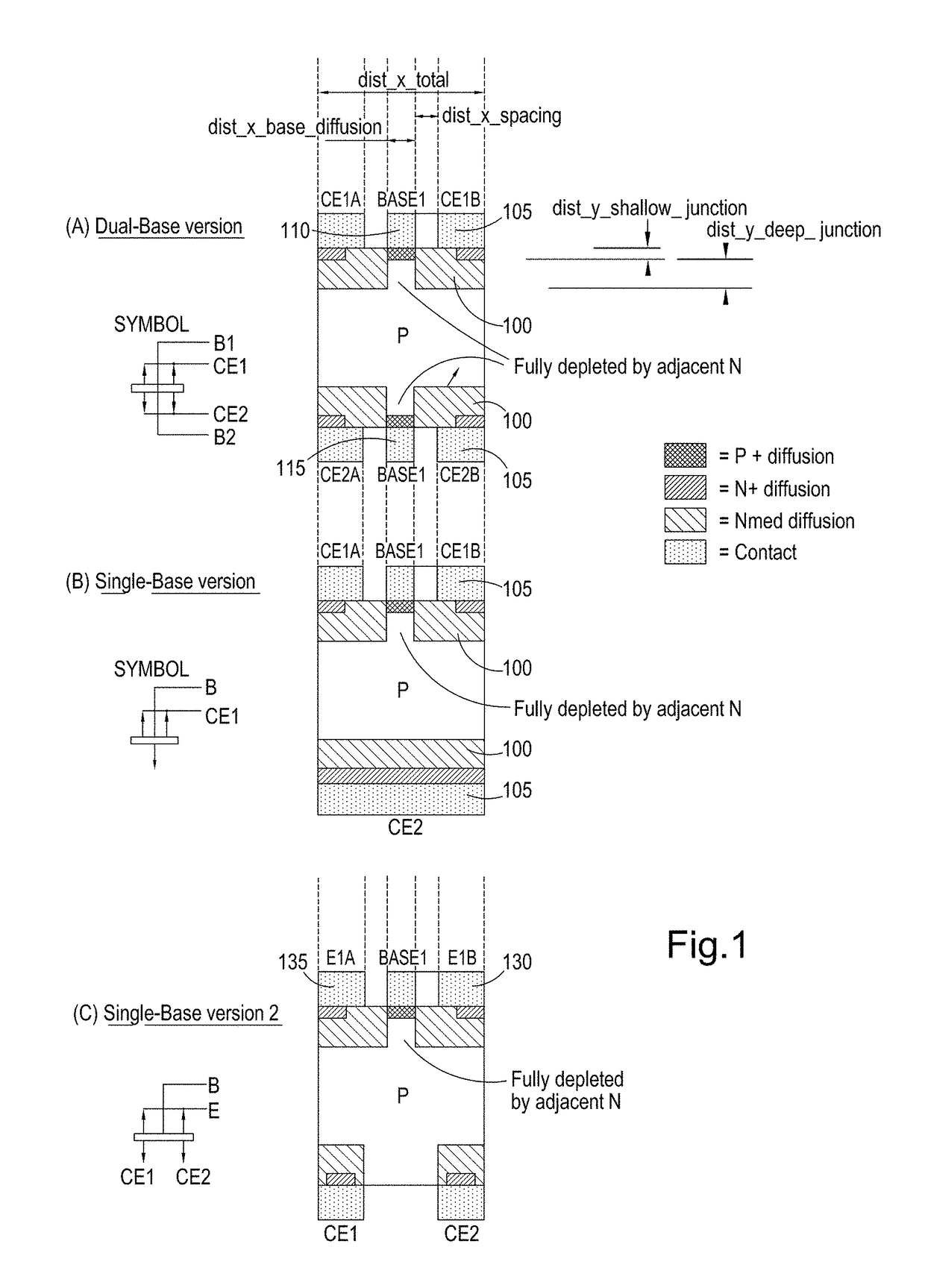Anodic etching of substrates
a substrate and anodized etching technology, applied in the direction of transistors, electronic switching, pulse techniques, etc., can solve the problems of lack of ac switching ability, one or more limitations of standard devices, etc., and achieve low cost, simple drive requirements, and inherent ac switching ability
- Summary
- Abstract
- Description
- Claims
- Application Information
AI Technical Summary
Benefits of technology
Problems solved by technology
Method used
Image
Examples
example conversion
of IGBT to NIGBT I2 Device
[0337]To illustrate the process of converting an IGBT to a I2 device, we took the planar IGBT example distributed with Silvaco's Atlas TCAD drift-diffusion simulator.
[0338]See http: / / www.silvaco.com / examples / tcad / section40 / example4 / for the example.
[0339]With the same doping and geometry, stripping out the MOS part and rearranging the terminals, and contacts, an I2 version reduced the simulated on-voltage from 1.75V to 0.15V at the cost of (equivalent VCE loss) 0.5V due to base current. This cost dropped to 0.2V equivalent when the lifetime was increased from 1 uS to 5 uS (still well within standard CZ wafer specifications).
[0340]The overall benefit is a 2.5-5.times. reduction of conduction losses, improvement in switching performance, a driver that can integrated on a CMOS chip, and 2 fewer manufacturing masking steps.
AC Current Conduction Paths
[0341]When considering the AC operation of an I2 device, FIG. 31 helps to visualise the main current paths in eac...
embodiments
D2-Device
[0423]The features of the method are described by way of an example, the simplest embodiment being that of an active rectifier. Externally this is a two terminal device and acts as a low-forward-voltage, high reverse blocking voltage diode. Four such devices can form a bridge-rectifier.
[0424]FIG. 37 shows the circuit and structures for producing a 2-terminal ‘diode’ device with a forward voltage of the order of 0.1V and a reverse blocking voltage of >1000V at very low leakage current. This performance contrasts with traditional high voltage silicon rectifier diodes which exhibit a forward voltage between 0.75V to 1V and cause a significant power loss especially on 120 Vac mains rectification applications (2 diodes conducting) of around 2 W per amp which equates in monetary terms to $2 per amp, per annum wasted on electricity per bridge-rectifier.
[0425]Silicon Schottky-type rectifiers are not useful at high reverse voltage because a) the reverse leakage current is very ...
PUM
 Login to View More
Login to View More Abstract
Description
Claims
Application Information
 Login to View More
Login to View More - R&D
- Intellectual Property
- Life Sciences
- Materials
- Tech Scout
- Unparalleled Data Quality
- Higher Quality Content
- 60% Fewer Hallucinations
Browse by: Latest US Patents, China's latest patents, Technical Efficacy Thesaurus, Application Domain, Technology Topic, Popular Technical Reports.
© 2025 PatSnap. All rights reserved.Legal|Privacy policy|Modern Slavery Act Transparency Statement|Sitemap|About US| Contact US: help@patsnap.com



